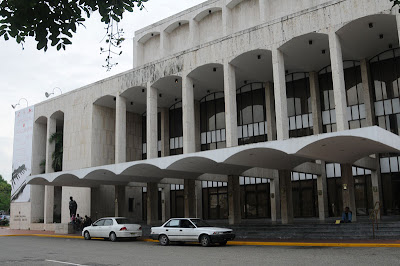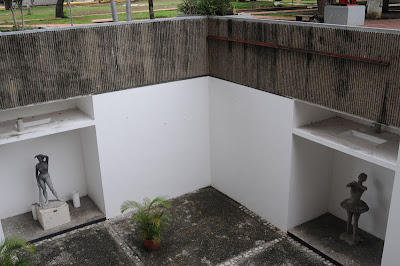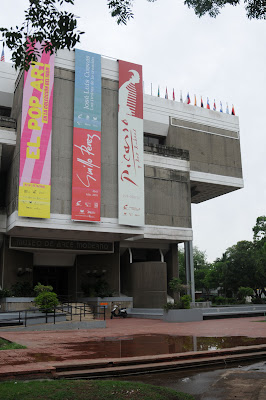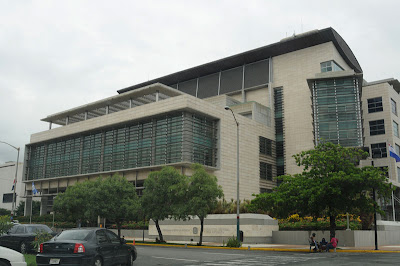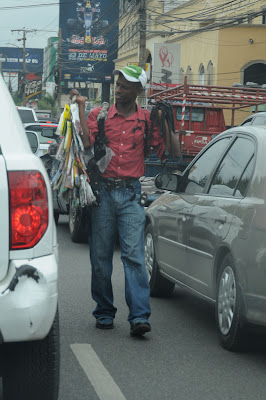What did the land where he landed look like? Why would he have thought that he had got to India even though the landscape looked completely different from any description of India he would have ever heard/read of? Wouldn’t he have known what sort of trees grew in India? Wouldn’t he have looked for any cultural resemblance between what he was supposed to see and that which he found here? Did he ever doubt that he was in India?
The fact that the ‘great explorer’ Christopher Columbus (although having made four successful trips to the Americas) never knew that he hadn't actually found an alternate route to India has always intrigued me.
So while I’m here I thought it appropriate to make a short trip to the north-western coast of the Hispaniola to a region called Samaná in an attempt to answer a few of these questions. It is in this area that Columbus first landed and tried to establish the first European settlement on the island (albeit unsuccessfully) . Samaná is a good four hours away from Santo Domingo and Melisa not only agreed to give me company but also offered to drive me there :-) … The highway to Samaná cuts across some of the most amazing country-side I have see in a while. Barely out of the city and you’re already in a region known for its agriculture – vast fields of crops line the highway with the central mountain range of the island forming a brilliant silhouette at the horizon!
Samaná is a good four hours away from Santo Domingo and Melisa not only agreed to give me company but also offered to drive me there :-) … The highway to Samaná cuts across some of the most amazing country-side I have see in a while. Barely out of the city and you’re already in a region known for its agriculture – vast fields of crops line the highway with the central mountain range of the island forming a brilliant silhouette at the horizon! Since a portion of this road was relatively new we had to make a slight detour to the village of Monte Plata to get some supplies and boy am I glad that we made this detour for I got a slight glimpse of the post card perfect image of a Dominican Village – complete with streets lined with colorful tropical wooden houses…
Since a portion of this road was relatively new we had to make a slight detour to the village of Monte Plata to get some supplies and boy am I glad that we made this detour for I got a slight glimpse of the post card perfect image of a Dominican Village – complete with streets lined with colorful tropical wooden houses…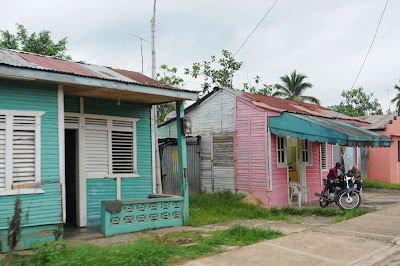 Back on the highway and after another long stretch of fields we passed thru Los Haitises National Park.
Back on the highway and after another long stretch of fields we passed thru Los Haitises National Park.  As we entered the Park the highway transported us into what seemed like a set out of the movie ‘Lords of the Rings’ - to an unimaginable fascinating landscape made of 100s of almost perfect conical hills covered in lush tropical greenery spread out equally in every direction.
As we entered the Park the highway transported us into what seemed like a set out of the movie ‘Lords of the Rings’ - to an unimaginable fascinating landscape made of 100s of almost perfect conical hills covered in lush tropical greenery spread out equally in every direction.  Sadly it was already evening and sunset was fast approaching we had to skip taking a halt at this biodiversity hot spot of the island.
Sadly it was already evening and sunset was fast approaching we had to skip taking a halt at this biodiversity hot spot of the island. Another small stretch of fields and finally we were entering the peninsula of Samaná with the spectacular Samaná bay on our right. As we entered the peninsula it sort of started making sense..
Another small stretch of fields and finally we were entering the peninsula of Samaná with the spectacular Samaná bay on our right. As we entered the peninsula it sort of started making sense.. Why was Columbus convinced that this was India - history books are very clear on what he was trying to do when he set out in search of an alternate route to India.. He was trying to bypass Europe's nemesis the Moors (who controlled much of the Indian ocean) to get to the land of spices to be more specific to get to Kerala. And standing here at the bridge that connects Samaná peninsula to the rest of the island I was awestruck at the similarity between this landscape (covered in coconut palms and bordered by white sandy beaches) and what I'm used to seeing back home in Kerala! In a strange way I had traveled half way across the world to reach back where I began!!!
Why was Columbus convinced that this was India - history books are very clear on what he was trying to do when he set out in search of an alternate route to India.. He was trying to bypass Europe's nemesis the Moors (who controlled much of the Indian ocean) to get to the land of spices to be more specific to get to Kerala. And standing here at the bridge that connects Samaná peninsula to the rest of the island I was awestruck at the similarity between this landscape (covered in coconut palms and bordered by white sandy beaches) and what I'm used to seeing back home in Kerala! In a strange way I had traveled half way across the world to reach back where I began!!!  If there is so much similarity between here and Kerala to even convince a person from Kerala (ie Me) that this is might just be Kerala how the hell could Columbus who had never visited Kerala make out the difference! It's almost impossible to write a description of this landscape that won't hold true word for word for the coast of Kerala. The coconuts, the beaches, the greenery, the hills and the bay.. I myself could point at least 3 bay areas in northern Kerala alone what are near clones of this region.. It's sometimes easy to miss out the role that perception plays in determining what we believe - if I were to judge where I stood based purely on my perception and not reason I could have sworn I was in Kerala!
If there is so much similarity between here and Kerala to even convince a person from Kerala (ie Me) that this is might just be Kerala how the hell could Columbus who had never visited Kerala make out the difference! It's almost impossible to write a description of this landscape that won't hold true word for word for the coast of Kerala. The coconuts, the beaches, the greenery, the hills and the bay.. I myself could point at least 3 bay areas in northern Kerala alone what are near clones of this region.. It's sometimes easy to miss out the role that perception plays in determining what we believe - if I were to judge where I stood based purely on my perception and not reason I could have sworn I was in Kerala!  As we drove towards Playa Bonita (which literally translates to 'Beautiful beach') where we spend the night the similarities got ever more intense.. The road snaking thru the dense tropical undergrowth was like any sketch of NH 7 that cuts across Kerala. As for my other questions about people and culture I guess back in 15th century the idea of different peoples was exactly that they were different, until quiet recently in history we were all the others (the non Europeans) so it's probably unlikely for Columbus to have figured that the people who inhabited this beautiful island were in fact never Indian!
As we drove towards Playa Bonita (which literally translates to 'Beautiful beach') where we spend the night the similarities got ever more intense.. The road snaking thru the dense tropical undergrowth was like any sketch of NH 7 that cuts across Kerala. As for my other questions about people and culture I guess back in 15th century the idea of different peoples was exactly that they were different, until quiet recently in history we were all the others (the non Europeans) so it's probably unlikely for Columbus to have figured that the people who inhabited this beautiful island were in fact never Indian! Early this morning and I walked up and down Playa Bonita pondering how it must have felt to set out into the open ocean for months at end in search of a place that you've never seen and eventually finding something else that would change the course of mankind!
Early this morning and I walked up and down Playa Bonita pondering how it must have felt to set out into the open ocean for months at end in search of a place that you've never seen and eventually finding something else that would change the course of mankind! It was over an hour before I came across the first person on this impossibly beautiful beach.
It was over an hour before I came across the first person on this impossibly beautiful beach.  Here's a few more photos from Playa Bonita
Here's a few more photos from Playa Bonita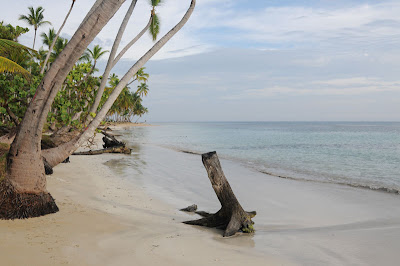



 In a way Samaná had already offered more insight into Columbus' discovery than what I would have thought possible before I started off yesterday so I decided to stop worrying about him and really soak in the natural beauty of this region.
In a way Samaná had already offered more insight into Columbus' discovery than what I would have thought possible before I started off yesterday so I decided to stop worrying about him and really soak in the natural beauty of this region. We headed to see El Limón Waterfall deep in the forest...... this involved riding a horse for around half an hour ....
We headed to see El Limón Waterfall deep in the forest...... this involved riding a horse for around half an hour ....

 ... and trekking down a hill for another half an hour but it was spectacular.
... and trekking down a hill for another half an hour but it was spectacular. I've seen many really amazing waterfalls in the European alps and in different parts of India (Himalayas, Western Ghats,Meghalaya..) but none of them quite had the setting of El Limón.
I've seen many really amazing waterfalls in the European alps and in different parts of India (Himalayas, Western Ghats,Meghalaya..) but none of them quite had the setting of El Limón. and below a few more photos of this enchanting waterfall..
and below a few more photos of this enchanting waterfall..



 After this adventure we headed out to the city of Samaná for a quick look around before heading back to the capital. Here's a few photos of Samaná, it's bay and picturesque colored houses
After this adventure we headed out to the city of Samaná for a quick look around before heading back to the capital. Here's a few photos of Samaná, it's bay and picturesque colored houses

 And some of the journey back to Santo Domingo ..
And some of the journey back to Santo Domingo ..

 While leaving for Samaná I had set out to figure out how/why Columbus got fooled and soon realized he never did - Why would he want to find the route to India once he had figured how to get to paradise?!!
While leaving for Samaná I had set out to figure out how/why Columbus got fooled and soon realized he never did - Why would he want to find the route to India once he had figured how to get to paradise?!!

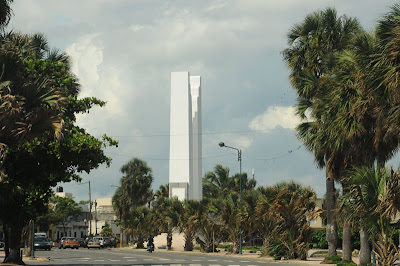


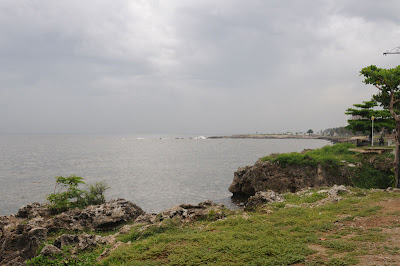



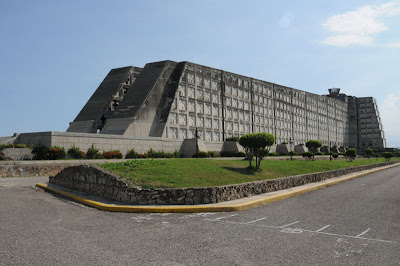

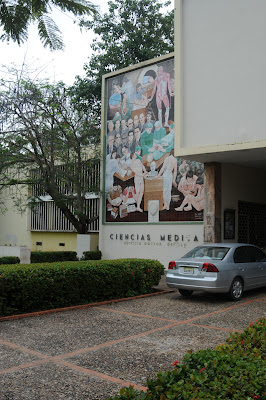





 the National Congress building above was designed by the father of Dominican Modernism - Guillermo Gonzalez Sanchez (1955), I believe the next building which part of the same complex was also designed by the same architect
the National Congress building above was designed by the father of Dominican Modernism - Guillermo Gonzalez Sanchez (1955), I believe the next building which part of the same complex was also designed by the same architect



